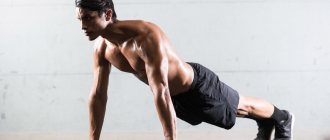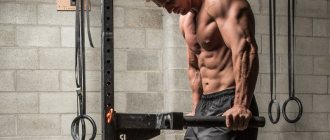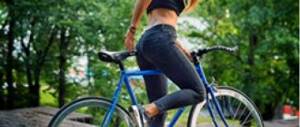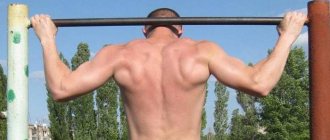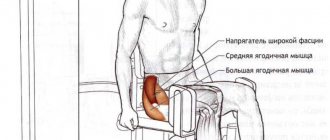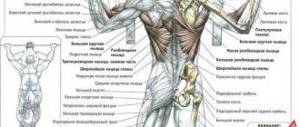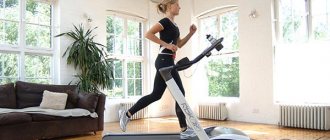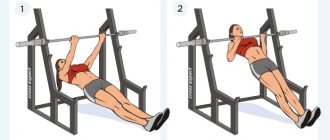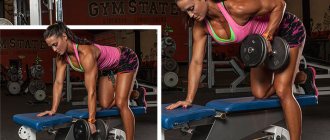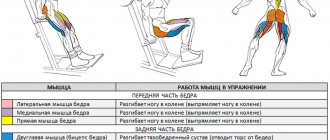Dips: a little theory
Dips on parallel bars anatomically copy the bench press, but are not as “convenient” as the bench press, and therefore are relegated to the background in modern bodybuilding. Meanwhile, this exercise is more “beneficial”, since the lower position of the movement stretches the pecs more strongly. It is well known that powerful stretching at the start of an exercise increases its impact and accelerates the accumulation of muscle mass. In addition, the positive phase of the push-up puts stress on the lower area of the pectoral muscles. This allows you to “draw” the lower border of these muscles much faster.
As a strength exercise, dips are no worse than the bench press. They confidently increase the total strength of the shoulder girdle and pectoral muscles. If you can't do a horizontal press, replace it with dips.
In the gym
If you work out in the gym, then finding an exercise that replaces the uneven bars is easier. Among the many options, there are several that are most effective.
Close grip bench press
This exercise has many benefits.
- It is a complex exercise - when it is performed, all the heads of the triceps are involved, thereby improving its development.
- In this exercise you can achieve maximum mass, strength and a combination of these two parameters.
- Allows you to improve the quality of the classic bench press.
- The easiest exercise to perform that allows you to achieve high performance.
Bench push-ups
The technique of performing this exercise helps to increase the strength and mass of the triceps. When combined with other basic exercises, you can make serious progress in gaining muscle mass.
In addition, performing such an exercise diversifies your workout, which has a beneficial effect on the development of muscle tissue.
French bench press
When performing this exercise, many beginners make various mistakes.
- Elbows should be kept at the same level throughout the entire approach. They must be stationary, otherwise there is a high risk of injury.
- There is no need to come up with something unusual, for example, placing your feet on a bench. This does not change the load on the triceps, but it is more difficult to maintain balance.
- Under no circumstances should you throw your head back behind the bench. This position does not affect the muscles in any way, but increases intracranial pressure, which is extremely undesirable during strength training.
- Don't skip warming up. If you miss it, your risk of injury increases.
French press standing
This exercise has certain benefits.
- Promotes good development of strength and volume of the arms.
- The three heads of the triceps are involved.
- Better muscle stimulation.
- Improves the quality of classic bench press performance.
- Stability of shoulder and elbow joints.
Technique for performing push-ups on parallel bars
The basic scheme for performing push-ups on parallel bars is as follows:
You should grab between the parallel bars with a neutral grip and straight arms. As you inhale, we lower ourselves down, bending our elbows, until the shoulder joint is moderately stretched. The “depth” depends on your strength and degree of flexibility. Then, along the same trajectory, rise up, exhaling. The chin is raised while performing the exercise.
Dips can be done with emphasis on the chest, or on the triceps.
To shift the emphasis to the triceps, keep your arms close to your body, press your elbows as tightly as possible to your body (they should look back), legs straight, bend forward when performing the exercise is minimal.
When focusing on the chest, the opposite is true. We spread our elbows to the sides (about 45 degrees), the grip is slightly wider than the shoulders (of course, if you have, for example, sliding bars or several bars with different distances). When performing the exercise, bend your knees and lean forward.
If we summarize everything that has been said, it will look like this:
Chest emphasis:
- A neutral grip is slightly wider than shoulder width;
- Tilt forward when lowering;
- Elbows slightly turned to the sides;
- At the bottom there is a stop at the point of comfortable stretching;
- Raise up until your arms are straightened.
Triceps Focus:
- Neutral grip, shoulder width apart;
- When lowering, the torso is straight;
- Elbows close to the body;
- At the bottom there is a stop at the point of comfortable stretching;
- Raise up until your arms are straightened.
How to do push-ups correctly
PUSH-UPS FOR CHEST MUSCLES - VIDEO
Depending on the position of the body and arms when doing dips, we can shift the load towards the pectoral muscles or triceps.
To load the pectoral muscles, spread your elbows to the sides, move your body forward, do not straighten your arms completely in the upper position. The movement should be smooth throughout its entire amplitude. Avoid falling down uncontrollably as this may result in injury.
A video of correct chest dips can be viewed here
TRICEPS PUSH-UPS – VIDEO
To focus on your triceps, do dips while keeping your torso straight. Move your elbows back. Triceps work well on narrow bars - if you grab them with a grip slightly narrower than shoulder width. The pectoral muscles are more involved in the work if the bars are located at a distance wider than the shoulders and provide a wide grip.
A video of correct triceps dips can be viewed here
PUSH-UPS. BASIC ERRORS
- performing the movement too quickly. This is the biggest mistake when doing dips. To properly work out your muscles, try going down for a count: 2-3 seconds to move down, hold for a second in the lower position, then 2-3 seconds to go up. In the upper position, tighten your chest and triceps, this will give them additional stress.
How to do barbell curls correctly
- lack of warm-up. Dips without warming up can lead to strained pectoral muscles and injuries to the elbow and shoulder joints. The shoulder joint should be kneaded especially carefully - it is this joint that is most often injured when doing push-ups on the uneven bars. Pick up small dumbbells up to 2kg. Sit on a chair, bend your elbows - elbows at your torso, forearms parallel to the floor. Without changing the position of your elbows, move your forearms back and return to the starting position. Raise your arms bent at the elbows with dumbbells to the sides: move your forearms up and down. Rotate with your arms extended to the sides (without weights). Use elbow supports to prevent joint injury.
- too rapid progression of loads. Don’t rush to add additional weights to your dips. Hook the weight only after you can perform 20-25 repetitions at a slow pace with proper technique.
WEIGHTED PUSH-UPS
Additional weights are the main principle of muscle growth in dips. Use weights or dumbbell plates as weights. Hang them from your belt on a chain or a special belt (available in sports stores). If you don't have plates or weights available, you can use plastic water containers (5 liters or more) - fill them with water as you progress.
The Complete Guide to the Barbell Squat
Increase the weight of the weights as soon as you are able to complete the specified number of approaches and repetitions. The optimal number of repetitions per approach for muscle growth is 8-10. For relief – more than 10.
PUSH-UPS. TRAINING PROGRAM
A simple training program with a minimum of equipment might look like this. Train three times a week.
Day 1. Dips - 5 sets, until failure, additional weight. Push-ups from the floor (with a narrow position of the hands) - 4-5 approaches, until failure, additional weight. Bench push-ups for triceps - 4-5 sets to failure, additional weight. Handstand push-ups (feet resting on the wall) – 4-5 sets, until failure. Ab crunches – 3-4 sets of 30-40 reps.
Day 2. Wide grip pull-ups – 5-6 sets to failure. Reverse medium grip pull-ups – 5-6 sets to failure. Close grip pull-ups – 4-5 sets to failure. Archer pull-ups - wide grip, pull yourself up alternately with one hand and then with the other. 3-4 approaches to failure. Hanging leg raises – 3-4 sets to failure.
Day 3. Squats – 4-5 sets to failure. 50 times if you squat with your own weight, 10-15 times if you squat with a barbell. Walking lunges – 3-4 sets. Each approach is 2x25 meters. Squat jumps – 3-4 sets of 15 repetitions. Push-ups (regular hand placement) – 4-5 sets to failure. Scissors for abs – 5 sets of 20 reps (rest no more than 45 seconds between sets).
Attention! Before starting training, consult your doctor!
Where should I “insert” dips?
It makes sense to insert this exercise either at the end of chest workouts or at the beginning of triceps work. The number of repetitions usually varies from 8 to 15 in 3-5 sets. It all depends on your training program. For example, if you are working on technique or muscular endurance, then do 15. If you have a strength complex, and you use dips as an auxiliary exercise, then you can do 3-4 repetitions more than in the basic movement. For example, if before this you had a bench press of 5*5, then you can do triceps push-ups 3*8. All this is very individual!
Experienced athletes can use all sorts of high-intensity techniques, such as partial reps, forced reps, drop sets, and negative reps.
Bonus!
Scheme of push-ups on parallel bars:
At the end of the article, I want to please you with one interesting option for performing push-ups on uneven bars.
This exercise is much more difficult for the triceps ligaments. If you usually push yourself up with both arms, then this version of the movement is “one-sided.” Periodic shifting of the load from one triceps to another gives it a pronounced dynamic character.
START: Take a straight arms position on the parallel bars.
EXECUTION: Bend your elbows and lower yourself to the bottom position. Next, shift your entire body to the right side and push yourself up primarily with the strength of your right hand. Maintaining an offset position, lower yourself down, focusing on your right hand. Then shift your body to the left and repeat the movement, loading your left arm. This counts as one repetition.
NOTES: The housing must be kept strictly vertical.
This technique is shown in the figure below:
And finally, what can replace dips? The best option is push-ups from a bench. This exercise is done on the same principle as push-ups.
1 46
Did you like the article? Share with friends:
We recommend reading:
Push-ups as an alternative to the bench press
Leg training. Variety of angles in bodybuilder training.
Plyometric push-ups are explosive!
New type of grip
Bench press and dumbbells lying on the floor
Exercises for losing weight on the stomach and sides at home
Discussion: there is 1 comment
- Arthur says:
What should the dry people who can’t do bench presses on the uneven bars do, or can only push 2-3 times, what should they replace with and how should they prepare themselves before a full-fledged session on the uneven bars?
Home options
At home, you can choose a few basic exercises that can be a good replacement for dips.
- Push-ups on a bench, chairs. Performing this exercise is quite simple, and most importantly, it allows you to qualitatively develop your triceps.
- Pushups. By placing your arms wide, the pectoral muscles develop; with a narrow or medium position, the load on the triceps increases.
- Push-ups on dumbbells, kettlebells. Allows you to descend more deeply than with regular push-ups from the floor, but not as effective as from a bench. But overall, this is a good replacement for parallel bars.
If for some reason you cannot perform push-ups on the uneven bars, you can find alternative options. There are many exercises that promote effective development of the triceps and pectoral muscles. You just need to find the most suitable option for yourself.
